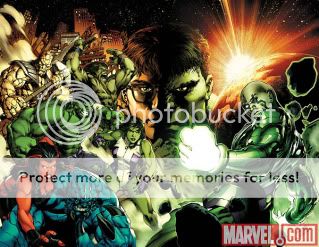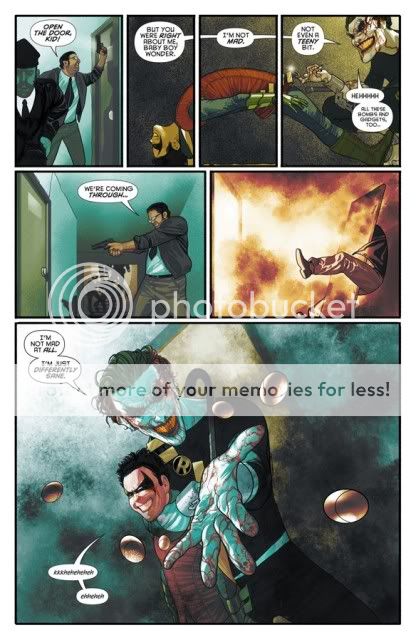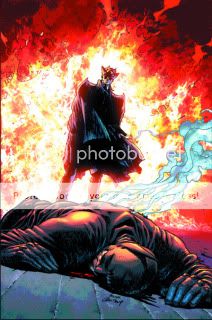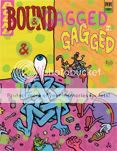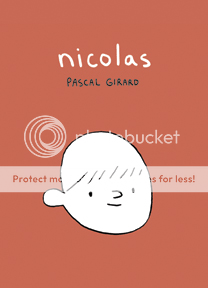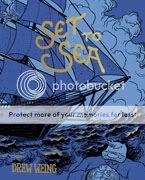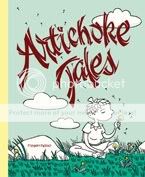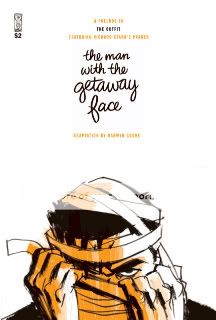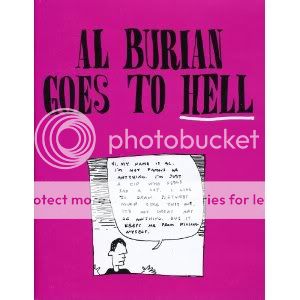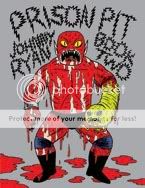Posts Tagged ‘comics reviews’
Comics Time: Incredible Hulks #612-613
September 17, 2010Incredible Hulks #612-613
Greg Pak, Scott Reed, writers
Tom Raney, Brian Ching, artists
Marvel, August-September 2010
32 story pages each
$3.99 each
When I talk about how Batman is the only superhero for whom I feel affection outside or beyond the quality of the Batman comic currently in my hand or movie/TV show currently on my TV, that’s not quite true. Years before I got into Batman, my childhood (and I mean young childhood, barely remembered fuzzy pool of memories out of which pops the occasional actual memory) favorites were, thanks to a back-to-back hour of Saturday morning cartoon programming, Spider-Man and the Hulk. But I think my continuing fondness for the Hulk, at least, stems from his being the superhero metaphor to which I most closely relate. First of all, huge green dude punching things is the superhero concept boiled down to its strongman essence. Secondly, mild-mannered smart guy who smashes anything that makes him angry? Sure, I’ll eat it. But best of all, the consequences of that superpower are built right into the concept. He might be able to put it off by becoming ruler of some planet someplace, or forming a surrogate family of super-goons, but ultimately the Hulk will always be an outcast, always unwanted, always on the run. If Spidey’s thing is “with great power comes great responsibility,” the Hulk is a cautionary tale about what happens when great power is used irresponsibly.
So I dig the Hulk. More specifically, I dig a lot of what writer Greg Pak has done with the Hulk. His Planet Hulk saga showed an admirable attention to detail in building the sci-fi space-opera world, aliens, and cultures through which an exiled Hulk cut a swathe on the road to becoming ruler of the planet. His subsequent World War Hulk event took the kind of concept that would make a third-grader say “Awesome!”–the Hulk vs. the Marvel Universe–and tied it to both killer fight scenes for John Romita Jr. to draw and an exploration of whether the ends justify the means and the extremes to which grief and rage will push us. After that, though, the Hulk disappeared from his own title, which became a road movie starring a de-powered Bruce Banner and his alter ego’s barbarian alien son Skaar, and then everything got tied up in a huge multiple-title roundelay of crossovers and spinoff miniseries and so on.
Now, I really liked all the huge gamma-irradiated bruisers suddenly coming out of the woodwork to jump ugly with one another throughout these events–after all, I love the Hulk conceptually, and there’s really not anything that having a million Hulk-type guys and girls running around pounding the shit of each other does to weaken that concept, so by all means let a thousand She-Hulks bloom. But without THE Hulk, without The Strongest One There Is, I decided to tune out until Big Green himself was back. Which is what Incredible Hulks–that’s not me referring to more than one issue of Incredible Hulk,that’s really a plural, it’s really referring to multiple Incredible Hulk characters a la William Safire going to Burger King and ordering five Whoppers Jr.–promises: Bruce Banner can transform back into the Hulk when he gets angry again, and he’s now surrounded by a posse of behemoths. If this is a book that lives up to the promise of a “Giants Walk the Earth” era of Hulks, I’m all for it.
As it turns out, I’m not all for it. On a surface level I think primary artist Tom Raney can pull off one genuinely impressive drawing of some big super-dude for every eight or nine drawings that make them look sort of gawky, so there’s that. But beyond that, you’ve got two problems.
One, I appreciate how hard Pak, aided by co-writer Scott Reed in this case, works at really doing the worldbuilding with regards to the space-opera concepts involved in this book’s co-feature, the story of Hulk’s other alien son Hiro-Kala traveling through space to find and kill his brother Skaar. But it’s almost impossible to get me to care about worldbuilding if the world you’re building don’t house a character I care about to begin with. Thus Planet Hulk works fine, because it’s the Hulk and I like the Hulk, but Hiro-Kala, Son of Hulk’s journey through space with his psychic-planet frenemy doesn’t work, because not only do I know very little about Hiro-Kala, the psychic planet, or anyone on it, but it also lacks the basic conceptual oomph that making him a huge strong awesome-looking brute would give him. He’s just a scrawny bald dude with crazy psychic powers, and the combination doesn’t mesh with the Hulk the way even his usual super-genius-model antagonists like the Leader or MODOK do.
Two, and this is the same problem I had with Incredible Hulk once it shifted to being the Banner & Skaar road movie storyline, I really don’t like stakes-free fighting in superhero comics. In the Banner/Skaar stories, Banner kept duping Skaar into meeting and fighting various heroes and villains with which the Hulk used to memorably spar–Juggernaut, the Thing, Wolverine, etc.–in order to train him to be a better fighter so he could kill off Banner’s alter ego if and when he ever reemerged. In other words, we knew these fights wouldn’t matter, because they were all pointing to some future fight; plus, in half the cases they were with other heroes, and we knew things could get only so ugly. So you just ended up twiddling your thumbs during what should be the most thrilling and visceral part of any supercomic.
In the case of Incredible Hulks #612-613, we know that the Hulk and the Red She-Hulk–the new vicious Hulk alter ego of Bruce’s ex-wife Betty–aren’t going to seriously hurt or kill each other or anyone else. We know it because they’re main characters who were married. We know it because they’re not really fighting for any particular reason–on an emotional level it’s the equivalent of two exes arguing. We know it because all the other characters are treating it with the seriousness of people watching a couple have an ugly spat in the frozen foods aisle of the supermarket. We know it because this is billed as a Hulk Family book and she’s the matriarch and thus she’s not going anywhere. In other words the book works overtime, on every conceivable level, to send the message that this battle doesn’t really matter. So…why have it, then?
Look, I know that part of superhero comics dating back to the Silver Age is having these goofy inconsequential fights where heroes smack each other around for a variety of reasons–mistaken identity, just being in a bad mood, whatever. But that it’s been done is not a good enough reason to keep doing it. If you’re like me, you think that fights in superhero comics are as important as songs are to musical theater. They’re where the real emotion of the story is expressed through spectacle. Granted, on a certain level that’s what’s going on here: Instead of just using harsh language, Hulk and Red She-Hulk punch each other. But the problem is that we know this won’t have any real consequences. They’re gonna make up and the story’s gonna move on. A good fight scene has to have some real, palpable ramifications for the participants–something that shakes up the status quo of the book on some level. As I detailed above, we know this won’t happen here. So keep your powder dry and save the fighting for when it matters.
Comics Time: Batman and Robin #14
September 15, 2010Batman and Robin #14
Grant Morrison, writer
Frazer Irving, artist
DC, September 2010
24 story pages
$2.99
Despite liking this issue more than any other single-issue Batman comic I’ve ever read–short version: shuddery stylish Lynchian atmosphere with genuinely horrifying villains, cool action sequences, killer art, and a sense that it’s fun to be a Batman comic–I didn’t want to review it, simply because I’ve reviewed like a billion Grant Morrison Bat-books. But a quick check of my left-hand sidebar reveals that I’ve run only five such reviews; that’s a tie for third place in the Attentiondeficitdisorderly Review Sweepstakes with Big Questions, compared to eight separate reviews for MOME and a whopping eleven for King Shit of Comics Time Mountain, Cold Heat. (It’s Frank Santoro’s world–we just live in it.)
So what the hey, let’s talk about artist Frazer Irving and artist Frazer Irving only. Irving emerges here as Morrison’s single best collaborator, I think. This is something of a surprise, not only because of the existence of Frank Quitely, but because this pair’s previous Bat-collabo, Batman: The Return of Bruce Wayne #2, was a murky, hard-to-follow mess, owing largely to Irving’s failure to properly differentiate his Puritan-garbed Bruce Wayne from his similarly attired antagonist. (This has its in-story reasons, as it turns out, but still.) This issue, however, is the kind of thing where you could just go page by page enumerating all the visual high points and let that make your argument for you. To wit!
* Page one: The steely blue color of abandoned Wayne Manor
* Page two: The Joker cowering on the floor, turning to face us only after he’s revealed he’s been in control all along
* Page three: The Joker’s awkward positioning of his hands, closed eyes, off-balance body language, and big grin conveying how he’s flailing around without a care in the world, so confident is he that he’ll best his tiny, deadly opponent Robin; the barely visible splash of blood when the Joker scratches Robin’s face with his poisoned fingernails
* Page four: The emergence of aquamarine against he ugly brown background as Robin begins hallucinating; depicting Robin’s spasms by showing him against the floor, propped up only by his heels and the back of his head–his whole body an inverted rictus
* Page five: The sudden shift from blue-green to bright orange as the explosion hits–the door has already been blown clear across the hallway and knocked the cop off his feet, as though we blinked and missed a panel
* Page six: What do you even say about this image of Professor Pyg hanging upside-down, held up by barbed wire, in the womb of his monument to his imaginary mother? It’s an absolute killer, but I will add that the belly-fat rolls are a nice touch.
* Page seven: The choreography of the Senator’s recoiling away from Doctor Hurt’s gunshot; the tangent linking the vomit bucket to the pumpkin with teeth in it (yes, it’s that kind of comic)
* Page eight: The fact that this action sequence is colored pink; the motion of Gordon’s body and trenchcoat in panel three
* Page nine: The color palette’s shift to orange with every gunshot; the cantered frames
* Page ten: The way Batman’s body seems to spin with each panel
* Page eleven: The final three panels leaning forward into one another, pushing Batman and the viewer along to the inevitable explosion
* Page twelve: That top-most silhouetted body flung into the air by the explosion, limbs dangling backwards
* Page thirteen: Professor Pyg’s proclamatory pointer-finger gesture as he announces “Je suis showbiz!”; the quasi-fisheye view of Hurt, Pyg, and their minions walking down the hall, as though they’ll breeze right past us in another second
* Page fourteen: The musculature of Dick Grayson’s bare back
* Page fifteen: The light from the doorway as Batman runs to the Batcopter
* Page sixteen: Conveying Commissioner Gordon’s disorientation when he awakes by drawing the panel upside-down, but in such a way that we can only tell for sure that it is upside-down if we flip it upside-down ourselves
* Page seventeen: The way panel three is lit from below and to the left; the consistency of the profile of Pyg’s mask in panels five and six
* Page eighteen: Pyg’s gut sticking out when he suspects he’s being made fun of for his weight problem
* Page nineteen: Pyg and Hurt, the Diabolical Duo
* Page twenty: Batman’s whirling-dervish fight choreography
* Page twenty-one: The look on Batman’s face as he lands the punch in panel four; Pyg’s pose when he tells Batman “I can’t blame you for finding me attractive”
* Page twenty-two: Batman’s flat boot-sole connecting with Pyg’s flat pig-nose; the fountain-like silhouette of Batman’s cape as he lands
* Page twenty-three: The ungainly way Batman whips around to see who’s behind him, when it turns out it’s no one and he was being tricked by Gordon–the pose conveys that he’s been duped
* Page twenty-four: Joker in the Batcave at last; the smiley face painted on the bound-and-gagged Robin; the final three images of Batman, the Joker, and Doctor Hurt
I’ve read a lot of superhero comics, and this sort of attention to detail is all but nonexistent. To rely this much on subtle shifts of figurework and coloring to convey both vital plot information and to enhance our understanding and appreciation of the physical combat that is superhero comics’ bread and butter, to have the chops to pull it off and the confidence to even try…well, it’s pretty much unheard of outside of some really titanic stuff, Dave Gibbons on Watchmen/Frank Quitely on All Star Superman-type stuff. And while Irving shares with Quitely a genuine, contemporary sense of style and art that allows for neon-bright colors to really pop, his work (perhaps because he does all the color and texture himself) feels fuller. Flipping through the book again before writing this sentence I realized that Irving will drop backgrounds just as often as Quitely does, but with his billowing puffs and swirls giving every panel depth, you’d never know it from memory. Irving took a comic it was apparently a struggle to convince people who needed to be convinced he should even be involved in and handed in the best-drawn superhero comic of the year, and honestly one of the best-drawn comics of the year period. Bravo.
Comics Time: Bound & Gagged
September 13, 2010Bound & Gagged
Andrice Arp, Marc Bell, Elijah J. Brubaker, Shawn Cheng, Chris C. Cilla, Michael DeForge, Kim Deitch, J. T. Dockery, Theo Ellsworth, Austin English, Eamon Espey, Robert Goodin, Julia Gfrorer, Levon Jihanian, Juliacks, Kaz, David King, Tom Neely, Anders Nilsen, Scot Nobles, Jason Overby, John Porcellino, Jesse Reklaw, Tim Root, Zak Sally, Gabby Schulz, Josh Simmons, Ryan Standfest, Kaz Strzepek, Matthew Thurber, Noah Van Sciver, Dylan Williams, Chris Wright, writers/artists
Tom Neely, editor
I Will Destroy You, September 2010
72 pages
$10
Buy it from I Will Destroy You
“What happens when you ask a bunch of cartoonists, artists, and assorted weirdos to do one panel gag comics? Comedy! Horror! Navel gazing! Abstraction! And more!!!” So reads the back cover of this collection of gag comics by a galaxy of alt/underground comix stars, and it’s pretty accurate as far as it goes. And as anyone familiar with the history of altcomix one-panel gags from Ivan Brunetti on down, the horror, comedy, and navel gazing can get pretty inextricable from one another. As such it’s the cartoons that make me say “Jeeeeeez” as well as “hahahaha” that click the hardest for me here. Josh Simmons takes top honors, as he is wont to do, with a drawing of burning, skinned cattle corpses floating down a river to a caption that reads “Uncle Daddy’s home.” The piece distills into a single panel the near-psychotic level of horror and rage that has absolutely seethed from Simmons’s every work for the past several years. Though nothing else really comes close to that level of nihilistic uncomedy, there’s something almost as soul-damaging in Tim Root’s lushly colored, presumably drawn-from-life portrait of an old woman in line in front of him at a convenience store whose wig has become infested with ants. Austin English hands in a page darkened with pencil to the point of near illegibility, accompanied by an incongruously sunny “Hello!” Perhaps the single most indelible image in the whole collection is Levon Jihanian’s reappropriation of the little girl from The Family Circus, here rendered as a mercilessly crosshatched shadow-person with white voids for eyes and bearing the legend “There is only one road that does not lead to death; and that is the road to hell.” I know, this thing’s a laff riot!
Actually, I laughed at all of those cartoons. The rest? Oh, you know, it’s a mixed bag, as you’d expect from anything with that many contributors. Tom Neely and Anders Nilsen’s contributions are poetic in gorgeous in the respectively lush and minimal way that Neel and Nilsen cartoons are poetic and gorgeous generally, but none are really gag comics. Andrice Arp gets a few yuks out of incongruous scenes drawn from her dreams, Julia Gforer at the expense of Wolverine, Marc Bell by doing his usual warped children’s television aesthetic thing, Theo Ellsworth by actually writing actual jokes that dovetail with his hyperdetailed cartooning, Kaz Strzepek by cracking a couple of mildly off-color jokes about fantasy creatures of the sort you might find on a D&D website, Eamon Espey by creating a Boschian tableau of defecating, murdering demons captioned with the phrase “Time to make the donuts.” The rest I suppose I could take or leave. It’s an exercise, geared more to the participants than the audience.
Comics Time: Rambo 3.5
September 10, 2010Rambo 3.5
Jim Rugg, writer/artist
self-published, April 2010
32 pages
$2
Buy it from any of these fine distributors, publishers, and retailers
Read it for free via Jim Rugg’s blog
George W. Bush is a dimwit. There, I just saved you a couple of bucks. Ah, I’m being way too harsh, there–Jim Rugg is a true illustrative talent, and in this minicomic pastiche of the Rambo movies and satire of the Bush Administration and post-9/11 America generally he slips and slides between various alternative-comics styles, from slick and cartoony to editorial-page-y to an almost Frank Santoroish shot of John Rambo viewing Ground Zero, with vigor and ease. The problem is that it’s in service of not much at all, particularly when compared with the surprisingly fecund material in Rugg’s similarly minded mash-up of pop-cult-trash and politics, Afrodisiac. Bush is here presented in a way you’ve seen him a million times before, a moronic, sneering fratboy manchild-of-privilege who’s both bloodthirsty and personally cowardly, and it’s not really any funnier here than it was in all the altweekly political cartoons you remember. Similarly, the portrayal of Rambo is solidly aligned with the Reagan-jingoist interpretation that jibes most closely with the second and third installments of his series, and with the very basic Bush-bashing the comic’s interested in. The complicating weirdness of the first and fourth films–in which Rambo is a victim of American adventurism rather than an exponent of it (the former) and a spiritually crippled killing machine and avatar of Conradian horror (the latter)–is ignored altogether. The comic’s the poorer for this, since I think the country’s blind stumbling rage, which if anything seems worse now than it did then, makes a far more compelling subject for exploration than the easy-target “America, Fuck Yeah”itude found in the umpteenth hyuk-hyuk Bush joke. Here’s hoping Josh Simmons makes Rambo 4.5.
Comics Time: Kaspar
September 8, 2010Kaspar
Diane Obamsawin, writer/artist
Drawn & Quarterly, January 2009
96 pages
$12.95
Again with the brown for the cover, but alright, fine, I’m clearly on the losing end of this aesthetic battle with D&Q and I accept that. What’s far more interesting here, and it’s a shame if the drab cover (not to mention the choice of grayscale for the interiors) obscure this, is the story of Kaspar itself. Or rather himself–Obomsawin here traces through contemporaneous accounts the life of one Kaspar Hauser, who for five years around 1830 intrigued and baffled European society with his amazing story of spending his first 16 years kept in total isolation with no human contact whatsoever before being taught some rudimentary language and handwriting by a mysterious man in black who then left him in Nuremberg to fend for himself. Kaspar’s story is one of a kind of cruelty my mind and soul virtually invert themselves to avoid having to deal with–I’m reminded of the story my wife told me from one of her psych courses, about a 19th-century experiment that used loud noises to condition a baby to be so afraid of bunnies that eventually he couldn’t even see a cotton ball without screaming. There’s something so unspeakably awful about human beings harming the human beinghood of a child right from the start that when I came across lines from Kaspar like “There is straw on the ground where I sit and sleep–it never occurs to me to want to stand up,” or the idea that he doesn’t know there even is anything else but himself, the bread and water he’s brought while sleeping, and the toy horse he’s locked up with, part of me just wants to run and hide. The trick of the book upon Hauser’s Chauncey Gardiner-like entrance into high society is using his literal inability to fathom the cruelty done to him (how can he–until now he had no context for what he was missing) and his appreciation for simple things like the color red or the concept of distance as a proxy for our own rejection of such monstrousness and a way to awaken our own lust for life respectively.
Of course, a visit to Wikipedia reveals that Hauser was almost certainly a peerless goldbricker, something his various patrons almost all cottoned to eventually, and from which the mysterious accidents and “assaults” that repeatedly befell and eventually killed him were likely self-inflicted to distract. Obomsawin’s choices to tell the story from Kaspar’s first-person perspective and to draw it in a simplistic, childlike, unadorned fashion we naturally scan as a direct outgrowth of Kaspar’s naivete–not to mention her one-page direct-address strip at the end, detailing her research for us, her “dear readers”–are a conscious effort to put aside the controversy and tease metaphorical meaning out of a story that’s too good to check. But if you’re like me, your mind already scrambled its way to “oh, this has gotta be a hoax, he must have been putting them on” long before you closed the book and opened up Google, and so the whole time you’re reading you’re wondering not just what Kaspar’s suffering, his reaction to society, and society’s reaction to him say to us–you’re wondering what the fact that someone could fake all that stuff says to us as well. I’m still wondering. In a way, the need in someone who’d do that is every bit as deep and devastating as the need in someone who was like that for real.
Comics Time: Fallen Angel
September 6, 2010Fallen Angel
Nicolas Robel, writer/artist
Drawn & Quarterly, July 2006
80 pages
$9.95
Stop me if you think that you’ve heard this one before, but I don’t get dreary brown book covers like this one–especially this one, given that the art inside is done in comparatively cheery hues of red and green as well as brown. This time around, however, the content is just as baffling to me as the package. Robel tells a fairy-tale-like story about a little man named Barnabe who lives in a Central Park-type oasis in the big city but is haunted by nightmares in which he becomes a giant and can’t help but leave a trail of destruction wherever he goes. One day an actual giant appears and magically conjures up three giant beautiful women, with whom Barnabe falls in love. When two of them spurn his advances, he either tries and fails to commit suicide Groundhog Day-style or just contemplates it, I’m not exactly sure. But then the third woman feels fond of him after all and starts looking for him, but by then it’s too late–he’s built Icarus-style wings for himself and taken a header off a cliff. Once he lands he snuggles with the woman, and there’s some narration about how he hadn’t noticed that his isolated life had changed, and then he lives in the city all of a sudden. Robel is using the dream logic of fairy-tale storytelling, obviously, but the symbols and rhythms and analogues make little sense either on their own terms or in terms of extrapolating them to a real-world moral, especially given the frequent disconnect between the narration and the events of the story. (I suppose it could be thinly veiled autobio, but in that case it never transcends the personal.) Robel has a memorably jagged take on the cute, round-headed little characters that populate many alternative comics of this sort, one that’s clearly of a piece with his hand-lettering, but it’s not so attractive or unusual that it overcomes the book’s other shortcomings by, say, creating cohesive and inviting environments, or even simply being really pretty to look at. Shrug.
Comics Time: Nicolas
September 3, 2010Nicolas
Pascal Girard, writer/artist
Drawn & Quarterly, December 2008
64 pages
$9.95
Let’s get two visual elements out of the way: 1) This is one of D&Q’s many, many little brown books, and I don’t understand the attraction to that ugly color; it makes books look like galleys to me. 2) Pascal Girard’s loose, messy minimalism is so close to Jeffrey Brown’s in appearance and effect, particularly in terms of character design, that this is practically a J.B. tribute album; not at all surprising to see Brown show up in the thank-yous. That said? Oof, this is a little gut-punch of a book. It’s a very minimal memoir dealing with the death of writer/artist Pascal Girard’s little brother Nicolas when both brothers were little boys, and how that loss has affected Girard’s life ever since. Starting it off with a three page section called “BEFORE” featuring the two boys playing Ghostbusters together, then abruptly transitioning to “AFTER” with a shot of Pascal sitting there alone is just one example of how pointed and to-the-point this book gets. I’m particularly struck by the decision (a very un-Brownian decision at that) to eschew panel borders and backgrounds entirely and rarely if ever telegraph temporal or spatial transitions. Each page contains two images, almost more doodled than drawn, floating atop the white paper, like the sudden flash of isolated, painful childhood memories to the surface of your otherwise formless and featureless sea of memory. Some sequences are almost too difficult to bear–Pascal clutching his pillow with increasing intensity, his eyes welling with black tears like stormclouds, as his parents finally tell him the story of Nicolas’s final hours; the final flashback, ending with an almost manic number of HA HA HA HA HAs as the two brothers, oblivious as to what is to come, laugh together. Somehow that laughter is an indication of a pain that will never go away.
Comics Time: Snake Oil #5: Wolf
September 1, 2010Snake Oil #5: Wolf
Chuck Forsman, writer/artist
self-published, 2009
20 pages
$4
I think there’s something on the verge of being really, really good here. Forsman’s wispy, hesitant line and Segar and Gray by way of Chester Brown and Sammy Harkham character designs can at times feel a bit unmoored against his backgroundless panels–I never quite buy their physicality. But it’s a lovely style, one that makes his characters instantly sympathetic, particularly the hefty, good-natured title character with his wilted mohawk and Sears uniform, but also even the abrasive, adenoidal types with whom he interacts. And that in turn is key to making the umpteenth “’80s ennui among the Great American Nowhere’s lower middle class” comic you’ve read feel, if not fresh, then at least deeply felt rather than a report from a rear-view mirror. Several of the moments Forsman selects to highlight in this day in the life are really astutely observed and wincingly sad, recognizable to anyone who’s overstayed their welcome in suburbia with shit jobs, fast food, small-hours onanism, and well-meaning reprimands from the family with whom he’s saddled himself. (Take that either way you want.) The ending in particular killed me, and I could return to the page where Wolf eats a burger and fries by himself over and over. Forsman clearly has enough control over line, pacing, and story that this is the sort of comic you read as much for the promise of future ones as for this one itself. I look forward to that future.
Comics Time: Set to Sea
August 30, 2010Set to Sea
Drew Weing, writer/artist
Fantagraphics, August 2010
144 pages, hardcover
$16.99
Read it for free at DrewWeing.com
It’s an odd little notion, the idea that you’ve lived a better, fuller life for having killed people. That’s probably a somewhat unfair aspect of Drew Weing’s good-natured, lushly drawn storybook (that’s the term the comic practically demands I use) Set to Sea–a tale of a big lummox of a poet whose lackluster verses about life on the open sea are given new verve when he’s shanghai’d into service on an actual ship–for me to seize on. After all, Weing’s bigfooted style and inviting rather than intimidating illustrative chops place him squarely in the adventure-comics tradition of Carl Barks and Jeff Smith. Why be churlish and begrudge its central character’s baptism by fire? Well, because it really is the central, transformative moment in his story. Before the pirate raid that he ends up beating back pretty much singlehandedly by slaughtering dozens of buccaneers and beating their captain to death in a rage, he’s miserable aboard his new home–complaining about the work and the rations, literally tossing his notebook full of unfinished poems into the ocean. Afterwards, he’s accepted by his shipmates, elected third mate, introduced to a world of beauty and adventure around the globe, and filled with enough genuine insight into the sailor’s life to become a hugely popular poet back on the mainland. At first I was impressed by how wordlessly nasty that central fight got, how Weing was unwilling to neuter the violence of this world. But by the time we get to the end of the book, with the now-respected poet/sailor, bearded and eyepatched, reclining by the fire of the pub from which he was once forcibly ejected, thinking back on a life well lived…well, this isn’t like Bilbo Baggins, forever trying to recapture his combat high, or Frodo Baggins, forever damaged by the horrors he witnessed and endured. It’s a dude kicking back saying “Yeah, it was all worth it.” I wish Weing had examined that assumption a little more closely.
Comics Time: Second Thoughts
August 27, 2010Second Thoughts
Niklas Asker, writer/artist
Top Shelf, March 2009
80 pages
$9.95
A sexily drawn story of how hard it is for sexy young people with glamorous careers in the arts to really connect with one another? Sure, I’ll eat it, though I’d understand if you’d prefer to pass. Second Thoughts isn’t exactly the sort of tear-down-the-sky take on this well-trodden slice-of-life litcomix subgenre that might cause you to reevaluate it if you’d grown tired of it in the past. What it is is an extremely well-executed example of it, with a surprising degree narrative complexity, subtle enough to be imperceptible to me until I read the back-cover copy after finishing my first read.
In retrospect, Asker tips his hand by first introducing Jess, one of the book’s two main characters, this one a writer struggling with a project and making a long-distance call to a touring musician girlfriend who’s clearly cheating on her. Jess then meets cute at the airport with John, a music photographer on the outs with his touring musician girlfriend and on his way out of town for good who not-so-surreptitiously snaps a photo of Jess as she waits for her girlfriend to return. Jess’s girlfriend texts to say she missed her flight in, John’s flight out gets cancelled, and the two go their separate ways, not meeting again until they both end up in bed together–but neither in the way you’re thinking now, nor in the way I thought when I first read that scene. Along the way a few of the character names change from one thing to another, and that’s all I’ll say about that.
Second Thoughts‘s primary selling point is Asker’s luxurious, inky art. He’s working in a style that will be familiar to fans of Paul Pope or Farel Dalrymple, but ratcheted down in a realist direction, evoking, say, some of Craig Thompson’s Blutch-ier stuff. Everything’s dark and shiny, the characters are all attractive in the sort of way that leaves you idly daydreaming about what it’d be like to make out with them…the book feels like the sort of thing meant to be read at night in an apartment in the city with cigarettes and a glass of wine–the sort of thing meant to be read by the characters involved, in other words. Which ends up being really fitting, because the whole idea is the way the mysterious glamour of attractive strangers enables us to conjure up whole lives for them in a way that is really more a commentary on our own lives than on theirs. It’s a nice place to visit.
Comics Time: Artichoke Tales
August 25, 2010Artichoke Tales
Megan Kelso, writer/artist
Fantagraphics, 2010
232 pages, hardcover
$22.99
Over a decade in the making, and it shows. This is far and away the best comic I’ve ever read from Megan Kelso, succeeding on almost every level. Her clear-line style gives an airy ease to her often detail-heavy drawings of nature and the people who inhabit it; similarly, her complex exercise in fantasy worldbuilding–and I don’t mean detailed maps with funny names, I mean real worldbuilding, constructing cultural and religious and economic structures rooted in environment and history and exerting macro and micro influence across the lives of all the characters involved–is subsumed into an absorbing, briskly moving house-divided family soap opera. So many elements in her tale of a land divided between its agricultural South and industrial North jumped out and demanded to be contemplated and enjoyed: Those appealing artichoke-head character designs. The Queen who fails her people in disastrously bloody fashion despite the good intentions of an entire system dedicated to her success. The way Kelso tells a byzantine multigenerational tale replete with flashbacks and jumps back and forth in time and space and the age of the characters involved while hardly ever telegraphing any of it, creating the impression of a tapestry of inescapable memory and history always influencing the present. The thoughtful, almost cerebral treatment of attraction, sex, and marriage. Heck, even the de rigeur fantasy trope of placing the actions of singular actors at the pivot points of world history is made to feel here less like the denial of the huge impersonal forces that drive human events more often than not than as some a logical, representative outgrowth of them. And man, that clear line is just sick. I dug this book to a degree that surprised me and look forward to returning to it. It’s a rich vein of alt-fantasy being tapped here.
Comics Time: The Man with the Getaway Face
August 23, 2010The Man with the Getaway Face
Darwyn Cooke, writer/artist
based on the novel by Richard Stark
IDW, April 2010
24 pages
$2
I never read The Hunter, the first in cartoonist Darwyn Cooke’s series of adaptations of Richard Stark/Donald Westlake’s Parker novels. As I’ve said before, on an aesthetic level I’m just not buying the ring-a-ding-ding Rat Pack nostalgia he’s selling. Moreover, to me the appeal of pulp has always been its deliberate economical unloveliness, so it’s weird to me to read a comic about a brutal killer lifted from the world of dimestore paperbacks that looks like a demo reel from a topflight animation shop. But I do recognize both the appeal of the source material and the pure chops of the adapter, and at just 24 pages and two bucks, The Man with the Getaway Face–an apparently short and sweet adaptation of the novel of the same and a prologue/teaser for the next full-fledged Parker graphic novel, The Outfit, and name–seemed worth a shot.
The result’s pretty much what I expected. It’s easy as pie to get drawn into a heist story, even one as knowingly prosaic as what Stark was up to here: Parker takes a job robbing an armored car during its guards’ regular stop at a roadside diner even though the money is barely worth the effort and despite knowing for a fact that one of his three coconspirators plans to steal his share, simply because he badly needs the cash following reconstructive surgery to hide his identity from the mob. Once the players and the plight are established, you race through Cooke’s panel-crammed pages (the lack of borders helps a bit in that regard, but they’re still pretty cramped given how much space-filling brushwork is going on inside each of them) to see how the scheme unfolds. And there’s certainly something enticingly Conan-like about Parker, a guy who feels no compunction about stealing if he needs money and killing whoever crosses him, but is just sort of steely about it rather than bloodthirsty.
That said, I really don’t get the appeal of populating a story like that with animation archetypes straight out of central casting, from the zaftig, flirty diner waitress to her tiny, balding, pencil-mustachioed patsy. The surgery subplot means that the Parker we see here is a complete redesign of a character Cooke already spent a graphic novel chronicling; an impressive feat with a strong payoff, but I wish the other characters shared his no-nonsense design. And it’s not as though that look and feel bring a ton to the action table, either. Not that there’s much action to speak of (just some guards getting coldcocked and a car crash), but from the angles to the choreography it feels like the goal is to make you say “ooh!” not “ouch,” let alone “Jesus Christ.” And that’s what I wanted, instead of it all being so…oh my god, am I really about to say this?…cartoony. I want pulp to be pulpy, you know? I don’t want it to look like Don Draper channeling Bruce Timm.
Comics Time: Al Burian Goes to Hell
August 20, 2010Al Burian Goes to Hell
Al Burian, writer/artist
Migraine, July 2010
80 pages
price unknown
Out of stock at Microcosm Distribution
Confession time: I threw this book away. More specifically I left it on the “free table” at my day job. Some stuff that doesn’t appeal to me at first glance gets kept around anyway just in case, like if there’s clearly a fully formed aesthetic at work that simply happens not to be my cup of tea; crude-looking zine-y stuff usually doesn’t stick around at all. But a few hours after putting this on the giveaway pile, an older, cooler coworker of mine pressed it back into my hands, saying he’d just read it in one sitting and was totally blown away by just how deep into his own darkness Burian was willing to go. Alrighty then–what have we here?
Well, I can see how my coworker, who I’m guessing hasn’t read a small-press comic since the ’70s, would be impressed. Years of immersion in the medium and exposure to an untold number of autobiographical alternative comics can dull you to the impact a book about nothing but the author’s depression and self-loathing could have on the unsuspecting. Burian uses a very, very loose pastiche of Dante’s Inferno to show himself spiraling into emotional paralysis over the course of a day spent at work, in art school, getting thrown out of a supermarket for grazing at the bulk bins, talking about life and literary theory with friends/faculty/presidential assassins, and so on; what he’s particularly good at is demonstrating how self-awareness–of the run-of-the-mill nature of his problems, of how turning them into art doesn’t necessarily validate either problems or art, of how he’s relatively fortunate in the grand scheme of things–makes the depression of the sort suffered by white male American middle-class artsy-fartsy types feel even worse, not better. Not only are you depressed, you’re lame, which is even more depressing!
But this is probably all stuff you were already aware of. However sympathetic you might feel about Burian’s plight, the art is still rudimentary–his avatar is a simplistic Easter Island-browed cartoon usually shown in profile, backgrounds are minimal to nonexistent, his line is just sort of a thick inert presence on the page. The storytelling, too, is pretty lackadaisical, basically just enough of a Dante swipe to avoid having to come up with a throughline of its own. I’m not the sort of person who waxes outraged over navel-gazing to make myself feel like more of a he-man autobio-haters club member, but bellybuttons ahoy. I’m also noticing that the bright pink cover is smearing itself all over the exterior of my laptop when the two are placed together in my backpack. It’s crudely done, is what I’m saying. It did leave me wondering what grade Burian got on it–it’s his college thesis–but it mostly left me wanting to give him an issue of King-Cat and say “Give it another shot”…
…which apparently is just what Burian did. Google reveals that by now he’s longtime punkrock and zinescene staple, living the expatriate life in Berlin. Indeed, according to this post on his blog, he never intended for this work–done some seventeen years ago, when he was 22–to be published, and a former colleague did so without authorization. I guess he got out of Hell, but Hell followed with him. A strange little saga.
Comics Time: The Airy Tales
August 18, 2010The Airy Tales
Olga Volozova, writer/artist
Sparplug, 2008
128 pages
$15
Like some of the other Sparkplug titles I’ve sampled–Inkweed comes to mind–The Airy Tales, Olga Volozova’s collection of original short fairy tales and fables, is a tough sell at first glance. And as I’ve often said, first glance is precisely where I buy or pass. There are too many comics and too few hours in the day to force myself to plow through a book I don’t find appealing on an art-surface level. Every once in a while an imprint will come along whose guiding aesthetic, and this is nobody’s fault, simply has little Venn-diagram overlap with mine. First Second is one; Sparkplug seems at times to be another. But then for whatever reason–usually because I’m up against a self-imposed deadline and the book looks short enough to read on the train– I’ll say “What the hell,” take it off the shelf, give it a read, and exit gladder for having done so.
Such is the case with The Airy Tales. Like Inkweed, its visuals aren’t really too my taste. Volozova’s shaky line and mixed media elements come across a little bit Stieg, a little bit Salazar, and a lot alien from where I’m at. The painted colors read craft-y rather than considered, the character designs are too wishy-washy to stand out the way the great illustrated children’s-book characters do, and the placement of captions in particular is a detriment to readability. It’s clear Volozova’s intent is to combine the sequential storytelling of comics with the static image-and-text approach of a child’s storybook, but her solution–placing the text in little boxes surrounding the central image that are sometimes read from top to bottom and sometimes read from left to right–is confusing even to someone who got his altcomix start with Acme Novelty Library.
This leaves the writing to do most of the work–and it works. I really have to hand it to Volozova for capturing the ineffable quality of fairy tales before Disney simplified them into plucky can-do adventures. The recurring images bear the mark of springing unbidden and unexplained from her underbrain, whether it’s giant celestial birds using tiny threads thousands of miles long to guide each individual human around the Earth or a man made of rain who uses his godlike powers of growth to make the lives of the people who come to him for help just slightly better than before. Most of the time you get the sense that there’s some moral to the story, but it’s a, well, weird moral, a moral based on the moral-ity of an age or society lost to us. Like, there’s this one extended fable about a group of people who each live on a different leaf of a tree that sheds those leaves every day, only for them to drift back onto the tree each night. All the residents have full lives except this one guy whose sole possession is a bright yellow sweater; since his leaf isn’t burdened with family members or fun stuff, he ends up higher on the trunk every day, and his neighbors get jealous. Finally he catches on and deliberately builds a contraption to lower himself down to their level, and they’re all finally happy, and you think it’s a crabs-in-the-pot-type parable about how livin’ free means living outside society, or whatever. But then the story ends by telling us only the yellow-sweater man knew that in fact the leaves were never gonna re-attach to the tree again, because of the impending snowfall–and then the snowfall comes and each snowflake contains a little kid or animal cub. And that’s it! That’s the end. As Zak Smith recently said, the wonderful thing about Wonderland is that it makes you wonder; The Airy Tales certainly left me scratching my head. It’s alien from me in both the bad way and the good way.
Comics Time: Curio Cabinet
August 16, 2010Curio Cabinet
John Brodowski, writer/artist
Secret Acres, April 2010
144 pages
$15
I’ve been writing about the similarity between the horrific and the sublime for (God help me) over a decade now, but its rare for me to come across a comic that makes that connection as frequently and as subtly as John Brodowski’s Curio Cabinet. While reading it I located squarely in the increasingly rich contemporary alt-horror tradition–the deformed figures and soft pencils of Renee French, the heavy-metal/D&D imagery of Lane Milburn, the mostly wordless narratives of (to my delight!) almost too many talented horror cartoonists to list. And yes, there’s even the de rigeur cat-torturing scene. But only in flipping through the book in preparation to write this review did I realize just how many of Brodowski’s short, creepy stories end with their alternately hapless or horrifying protagonists gazing into a vista of vast natural or even cosmic splendor. Two separate characters who have very different nature-based obsessions both end up immersed in the great outdoors, staring off into the distance–as does a lake monster after unleashing its full destructive power on a battlefield. Two other characters–one the victim of a monster-induced car wreck, the other none other than Jason Voorhees–become a part of titanic outer-space tableaux: Jason is cradled by his mother Pieta-style in the sky, the accident victim welcomed into the embrace of a colossal dog-god. Several stand-alone images, most memorably a series of illustrations from the old anti-Semitic myth cycle of the Wandering Jew, take on a similarly ecstatic, transcendental feel. The message is both troubling and comforting: It implies a connection between the individual horrors we experience and the very fabric of existence, yet it also suggests that perhaps an enlightenment is possible whereby this waking nightmare can be appreciated, if never fully understood. More like this, please.
Comics Time: A God Somewhere
August 13, 2010A God Somewhere
John Arcudi, writer
Peter Snejbjerg, artist
DC/WildStorm, June 2010
200 pages
$24.99
As the co-writer and by all accounts driving creative force behind the Hellboy spinoff series B.P.R.D., John Arcudi is responsible for what amounts to the best ongoing superhero series on the stands. A God Somewhere is not on that level. Which, as was the case with Wednesday’s review, is perfectly fine–few things are. Moreover, much of what makes B.P.R.D. so effective is tied into just how long it’s been going on. We’ve had years and years to get acquainted with and grow attached to its characters and the neuroses they bring to their long, losing war with the paranormal–to say nothing of the ever more baroque mythology of that war itself. By contrast, A God Somewhere has to get us to care about its central quartet of characters–brothers Hugh and Eric, their best friend Sam, and Hugh’s wife Alma on whom Sam has long harbored a more-than-crush–and their paranormal plight–Eric mysteriously gains powers that make him the world’s only superhuman, but which very rapidly drive him Doctor Manhattan-style crazy in such a way as to make him the world’s only supervillain–in the space of the equivalent of four issues.
It does this mostly through shorthand. Racial and religious issues are presented in the didactic style of a Law & Order episode (or, well, a superhero comic). Plot drivers are cribbed liberally from universal superhero touchstones like Watchmen or the Incredible Hulk TV show. The creators operate under the assumption that the audience is already familiar enough with once-innovative ideas for the subgenre–Superman as Christ figure; superpowers would “really” drive a normal person into bloodthirsty madness–to take them as read. In short, it can feel rushed, even clumsy–words you’d never associate with the laconic, precision-calibrated existential action-horror-black-comedy of B.P.R.D.
But the same intelligence and willigness to discomfit that Arcudi brings to that title shows up here, even if it’s forced to fight against the constraints of the shorter format. Flashbacks that enrich our understanding of the characters and their complex quadrangle start and stop with almost Jaime Hernandez-like suddenness, with only a change in panel-border color to differentiate them from the main action, which boasts equally fanfare-free jumps forward through time. The violence is in the over-the-top True Blood-level splatter mode of similar work in Powers and Invincible, but contains enough disturbing detail, largely through the familiar sub/urban setting of some of the worst bloodbaths, to lodge in the brain and curdle in the gut. There’s at least one plot twist so unexpected and awful I didn’t even understand what I was looking at until it was made clear a couple pages later. The degree to which Arcudi is willing to leave what’s going on inside Eric’s head a mystery, allowing him to speak only in transparently faux-profundities like what Sam calls “a crazy, mass-murdering Buddha,” is refreshing and a bit haunting. Peter Snejbjerg’s warm, round character designs–his stuff here reminds me a lot of Richard Corben’s Hulk comic Banner, and not simply because of the shared subject matter–are undermined a bit by uncharacteristically bland, brown-town coloring by Bjarne Hansen, but these are still people it’s pleasant to look at even when what’s going on is super-unpleasant. Is it the landmark that the effusive blurbs from Mike Mignola and Denny O’Neil make it out to be? No, but I would argue that that’s not the intention, either. It feels to me more like an exercise: a bunch of ideas about character and concept that Arcudi wanted to try out. Even if it’s not entirely successful, that exercise was a worthwhile one.
Comics Time: Fandancer
August 11, 2010Fandancer
Geoff Grogan, writer/artist
self-published, August 2010
36 big-ass pages
$20
This isn’t quite the knockout blow that was writer/artist Geoff Grogan’s last full-length mixed-media comic, Look Out!! Monsters. And believe me, that’s totally fine–without that out-of-nowhere book’s shock-of-the-new impact, its follow-up, Fandancer, was never gonna hit that hard. But from that stunning cover, perhaps my favorite of the year, on down, it’s definitely a hit. A sort of feminine yin to LO!!M‘s Frankenstein-by-way-of-Jack-Kirby masculine yang, Fandancer (loosely) tells the story of a superheroine we join mid-plummet from an exploding plane, harried by her Bizarro-style nemesis until she hits the water below. Then we appear to be transported backwards, first to the womb and then to some dawn-of-time confrontation between a nude woman and a male interloper who reveals himself as a goat-headed devil before stealing the suddenly very pregnant woman’s embryo/glowing-life-force-thing, eating it, and then restoring her to life as an afterthought. Then (I think) the superheroine whose (I think) origin story we’ve just seen comes to in the water, and through a series of collages involving vintage comic and advertising art, outer-space vistas, and hysterical dialogue cribbed alternately from romance and superhero comics, we trace (I think) her journey into the underworld lair of her male bedeviler, whom she subsequently defeats in cartooned combat. The book ends with a close-up of her face, the life-force back in her possession.
Or maybe not, I don’t know. The story, to the extent that there is one–and in the cut-up/collage section, who the hell really knows–isn’t important. What is important is the dazzling art from Grogan, in a variety of styles: primary-color Kirby pastiche, loose and gorgeous red-and-gold-and-blue crayon, the startlingly effective reappropriated collage material which appears to be tweaking all the usual suspects in that arena, from Lichtenstein to Spiegelman to Glamourpuss-era Sim. No matter the style, man oh man does all of it work hella well on the oversized pages Grogan’s working with here, with really stellar paper stock production values to boot–each flip of the page is an eye-popping pleasure. And as in Look Out!! Monsters, what emerges most clearly from the deliberately elliptical and allusive storytelling is a sense of struggle, of great inner beauty under traumatic assault from great inner ugliness. (Don’t get it twisted, there’s some funny stuff in here, too–I’m pretty sure one collage page is actually a sex scene, and figuring that out made me laugh out loud.) My sincerest hope is that Grogan keeps putting out a book like this every couple years, Ignatz Series-style. (The format’s very similar, if that helps you picture what’s going on here.) I’ll be back for all of ’em.
Comics Time: Cyclone Bill & the Tall Tales
August 9, 2010Cyclone Bill and the Tall Tales
Dan Dougherty, writer/artist
Moonstone, 2006
232 pages
$16.95
Fictional comic stories about music are often not just bad, but embarrassingly, infuriatingly bad. I’m not sure why this is, to be honest. I think the answer may be found in noting the tendency of stories about obscure/failed/garage/shitty bands/music (e.g. Jaime Hernandez, Gipi, Bryan Lee O’Malley, Makoto Yukimura) to be much much better than stories about famous/successful/stylish/supercool bands/music (you can probably rattle off the names of several such failed series from the past five years, easy).
First, the roundabout explanation. When you’re tackling music just as a thing people do out of compulsion or enjoyment, independent of external payoff, that’s universal. But when you’re approaching music as something that makes its practitioners that much more awesome than everyone else, you invite your readers to compare your depiction of that awesomeness to what they, personally, find awesome about the music they find awesome. And when that comparison clashes–as it often does, because rock-star hero worship is an enormously personal thing, millions of idiosyncratically intimate relationship established with fantasy figures–it’s throw-the-book-out-the-fucking-window time. The book ends up feeling…like a costume, a disguise, not like an outfit. (Weirdly, I don’t think this rule applies as neatly to movies as it does to comics. Maybe it’s because movies have an inherent glamour to them that comics don’t, so they can address the glamour more naturally, I don’t know. I really like Eddie & the Cruisers, is what I’m saying.)
But a more direct explanation would simply be “show, don’t tell.” In my experience, comics-about-music that pivot off the involved parties’ coolness tend to absolutely bury the reader in LOOK HOW COOL THIS STUFF IS!!!!isms, which is death for coolness in fiction as it is in real life. (Seriously, people who think Geoff Johns lays on the Hal Jordan hero worship too thick in Green Lantern need to get back to me after reading any recent series that invokes the British rock tradition in any way.) You don’t see the flopsweat when reading about the misadventures of Sex Bob-omb or La Llorona–they just do what they do, and that’s why it works.
Cyclone Bill & the Tall Tales falls somewhere in the middle, in large part because of what an odd, odd book it is. I stumbled across one of the single issues while working at Wizard, in a pile of the “well, somebody out there’s readin’ it, I guess”-type comics that tended to accrue here and there. It’s done in a painted, grey-tone black-and-white style that really does have more in common with alternative comics than “indy comics” of the sort you might expect from a publisher whose bread and butter is the randomest bunch of licensed properties you can imagine. (Kolchak the Night Stalker!) Writer/artist Dougherty’s work here is undoubtedly the work of a young cartoonist–it’s stiff at times, unequal to the tasks he sets for himself (like the first-person POV videotape mockumentary storytelling device that recurs throughout) at others–but there’s also much to admire and enjoy, from the attractive character designs to the stark, angular, expressionist overall look.
Moreover, the story boasts gratuitously weird elements galore. The nominal protagonist, documentarian Margarita Bloom, spending what seems like half the book asleep on the couch. Cyclone Bill, the titular guitar god whose untimely onstage murder (yep, it’s that kinda deal) is the center of the story, is a classically trained prodigy from Poland who toured the great halls of Europe before disappearing to become a Catholic priest or something, then reemerging as the second coming of Jimi Hendrix after plucking an undistinguished American bar band out of obscurity and joining them as their lead guitarist. Dougherty even casts himself and his real-world bandmates as main characters–Bill’s band, the Tall Tales. It’s all really quite singular, especially because Dougherty has left this sort of comic behind–he now does a humor strip about a coffee-shop clerk with a web page done in Comic Sans. Then as now, my first thought upon looking at this book is “Where the heck did this thing come from?”
This is not to say that the story doesn’t traffic heavily in traditional signifiers of cool, because it does. It’s the sort of comic in which a recreation of the famous photo in which Johnny Cash flips off the camera is used as a major plot point, if that helps. But in the main, it’s trafficking in such a hoary, out-of-fashion brand of rock and roll coolness that it’s practically gone all the way around to uncool again. Robert Johnson at the crossroads, Elvis Presley still haunting the highways of the Great American Nowhere, sinister significant others in the Yoko Ono role, a slogan-spouting punk as the antagonist, deals with the Devil in which souls are sold for rock ‘n’ roll, a celestial gathering of dead rock stars…this is your father’s musical mythmaking. Yeah, I cringed a little when Freddie Mercury, Kurt Cobain, John Lennon, Jim Morrison, and Elvis Presely teamed up to kick Satan’s ass around Graceland, but not as much as I’d have done had Jarvis Cocker been involved, you know? It’s far enough away from where I am not to clash so violently.
No, it’s not the Velvet Goldmine of comics I’ve long hoped for–a story that’s both reality-warpingly personal in its approach to the musical icons it’s dealing with, but also accessible enough to people who aren’t the creator to reveal something about the music and musicians involved, and entertaining enough for that not even to matter. But it is Doughterty laying it all on the line in terms of his love for a certain rock and roll tradition, fashion be damned, and that’s admirable in its own way. It’s a fictional comic about music that didn’t make me want to light it or myself on fire by the end, which is an achievement in and of itself.
Comics Time: The Witness
August 6, 2010The Witness
Hob, writer/artist
self-published, 2008
24 pages
$3
Comics about death, even good comics about death, are a dime a dozen.. Comics about death where the character that dies is biologically incapable of understanding what has happened to it? And in which the entire world dies, completely and irrevocably, taking all hope of future life with it? Rarer, and thank goodness, because I don’t know how many comics like this one I could take without cracking. This is not to say that the artist otherwise known as Eli Bishop’s “ghost story” about a dinosaur whose spirit lingers on Earth, occasionally interacting with its inhabitants (both alive and dead) until the solar system’s destruction billions of years from now by the expanding sun, is morbid or grim beyond the needs of the subject. Something about his airy, elegant line–able to convey the weightlessness of the dino-ghost and to accrue background detail without bogging the image down–prevents The Witness from ever feeling dreary or didactic. But that’s just it: This casual acceptance of the death of all things, a post-life eternity that just spirals on and on and on and on and on and on without ending, ended up being much more chilling to me than most stories about shuffling off this mortal coil. I’ve thought about my eventual expiration enough that doing so is like meeting a familiar friend. But death without the possibility of thought, by you, by anyone or anything else? That’s a stranger at the door and I’m afraid to let him in.
Comics Time: Prison Pit: Book 2
August 4, 2010Prison Pit: Book 2
Johnny Ryan, writer/artist
Fantagraphics, July 2010
116 pages
$12.99
“OPERATION: RAPE LADYDACTYL. BEGIN.”
It wasn’t until I read those words on the screen of a computer operated by a robotic antagonist of Prison Pit‘s main character Cannibal Fuckface that I realized just how far Johnny Ryan was going to go with this series. Obviously it was already beyond violent; obviously it was already beyond sexually vulgar as well, what with Volume One’s maggot-fellatio fade-out. Obviously Volume Two was already filled to bursting with literally nauseating body-horror transformations and mutilations brought to life (and death) by Ryan’s never better, never nastier pen art. But an extended sequence in which our anti-hero is forced against his will to hunt down, attack, maim, and graphically rape-murder a creature that’s distinctly female even for all its monstrousness, one that screams in agony…for the first time I realized that Prison Pit isn’t a fusion-comics exploration of awesomeness in all its forms, but a horror-comics exploration of awfulness–of violence that maims and kills not just body but soul. Ryan is willing, even this early in a series I imagine will be able to last as long as he wants it to, to completely invert his instantly-iconic warrior, to make the audience root against him desperately, to feel dick-shriveling revulsion at his violence and pity for his victim. “That fucking sucked,” CF says when it’s all over. Understatement of the year. This book is a masterpiece of awfulness.

